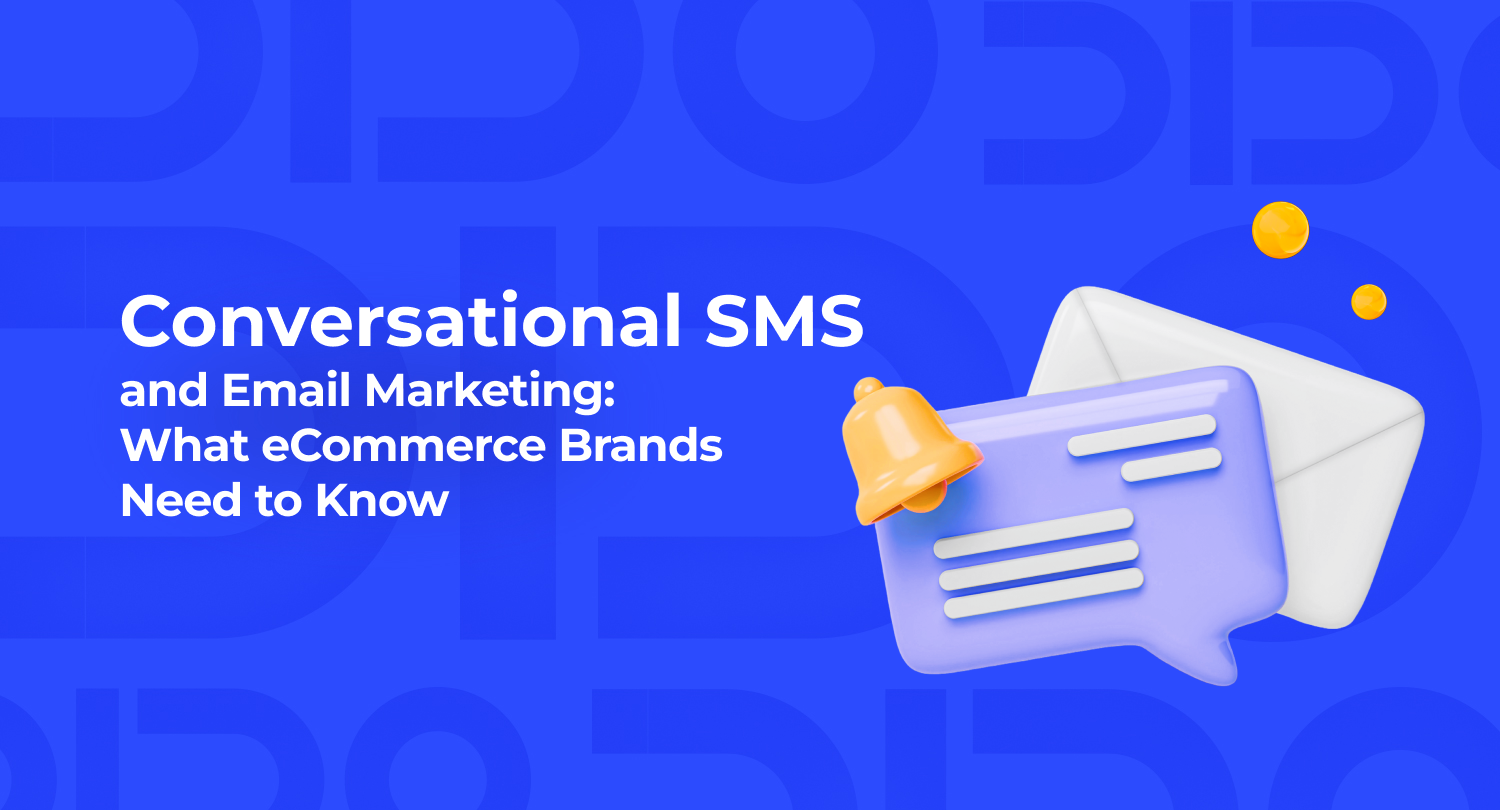Today’s eCommerce landscape is highly competitive.
It’s not enough to simply “stay in touch” with your customers anymore — you have to create experiences that feel personalized, real-time, and value-driven if you want to stand out.
While email has long been the backbone of many eCommerce brands’ digital marketing strategies, the emergence of conversational SMS has changed the game. Conversational SMS offers a powerful complement to email marketing that can dramatically elevate customer engagement, and we’ve seen firsthand the impact this pairing can have on eCommerce sales.
In this blog, we’ll take you through all things conversational SMS, from what it is and why it matters to how eCommerce brands can integrate it into their larger email marketing strategies.
Let’s dive in!
What Is Conversational SMS?
Unlike traditional SMS marketing, which often feels like one-way broadcasting from brand to customer, conversational SMS encourages two-way dialogue between your brand and its customers. It invites recipients to respond, give feedback, and engage in real-time.
Think of conversational SMS as a live chat tool, without a website ChatBot acting as the “middle man.” It allows your customers to ask questions, express concerns, and receive fast, helpful responses — all within a single text thread.
Why Should Email Marketers Care About Conversational SMS?
Email marketing is great for a lot of things, like detailed storytelling, product announcements, and nurturing long-term customer relationships, to name a few.
But the reality of email marketing?
Your consumers’ inboxes are crowded, and email marketing on its own may not be enough to make your brand stand out. That’s where conversational SMS comes in, complementing (and elevating!) your brand’s email marketing efforts in several ways:
✔ Speed — Most recipients open and read a text message within 3 minutes of receiving it, making SMS a perfect channel for time-sensitive offers.
✔ Engagement — Conversational SMS invites action and conversation. 39% of people are more likely to subscribe to SMS if they were conversational.
✔ Reach — SMS captures attention even when inboxes are ignored or cluttered. Plus, 32% of people say they’d be fine getting multiple SMS messages a week!
So, rather than seeing conversational SMS and email marketing as an “either or,” consider them two parts of the same marketing ecosystem. Together, they form a powerful channel for marketing that can dramatically improve your customer experience and engagement.
Conversational SMS Use Cases for eCommerce Brands
1. Abandoned Cart Recovery
Reminders about abandoned carts are a staple in email marketing, but what if you could follow up more directly? Conversational SMS lets you send customers a more personal budget to continue their shopping experience, while offering assistance to resolve any hesitations.
E.g., “Hey, noticed you left a few items behind. Can I help with sizing or shipping questions?”
2. Customer Support & Order Updates
After a purchase, customers want reassurance that they made the right decision. You can use conversational SMS to update customers on order delivery status and offer support. B2B companies can also use SMS to update customers on inventory restocks or bulk order statuses.
E.g., “Your order has shipped! Tracking #:123456. Any questions? Just reply to this text!
3. Product Recommendations
Once a customer has engaged with you via email, you can follow up with conversational SMS suggestions based on their behavior: This approach drives clicks and conversions while making customers see your texts as a helpful, welcome add-on (vs. a sales pitch they didn’t want).
E.g., “We think you’ll love these new arrivals based on your last order. Want a quick preview?”
4. Feedback & Reviews
You can also use conversational SMS to collect reviews or post-purchase feedback. It’s easier for customers to respond via text, especially once they get their order (and are hopefully excited about it!). Low-friction engagement like this can lead to more reviews and invaluable insights.
E.g., “Thanks for your purchase! Got 30 seconds to tell us how we did?”
Best Practices for Merging Email and Conversational SMS
Now that you’ve gotten a glimpse into what email and conversational SMS can look like in tandem, you might be wondering the best way to actually make it happen. Here are our top recommendations for merging your brand’s email and conversational SMS efforts.
Start With Clear Consent
Always get opt-in for SMS separately from email. Make it easy and transparent for users to know what they’re signing up for, and always deliver on what you promised.
Segment Strategically
Apply the same segmentation logic you use for your emails to inform your SMS campaigns, tailoring customer content by demographics, behavior, and purchase history, for example.
Stay Compliant
Conversational SMS needs to stay compliant, just like emails do. Respect TCPA, GDPR, and CAN-SPAM guidelines while also including clear, easy-to-follow opt-out instructions.
Time It Right
Don’t overwhelm customers by sending emails and SMS’s simultaneously. Instead, stagger sends to keep engagement consistent without being intrusive or overbearing.
Platform Integration: Why Unified Tools Matter
If your email and SMS marketing efforts live in silos, you’re missing out on massive opportunities to combine efforts and amplify customer engagement.
That’s why it’s so important to choose a unified email marketing platform that can integrate with SMS, allowing your brand to:
- Test and optimize performance across both channels
- Manage email and SMS efforts from a single dashboard
- Automate multi-channel journeys across email and SMS
- View unified customer profiles and communication history
This kind of platform integration is the difference between fragmented, disjointed marketing and a cohesive customer experience across email and SMS.
Wrap Up
Conversational SMS isn’t just a trendy tactic.
It’s a strategic opportunity to elevate your brand’s existing email marketing strategy, leading to results from higher conversion rates and faster customer support to increased customer satisfaction and elevated engagement rates.
And, most importantly, it can help you build trust and reliability, delivering the right message to your customers in the right place at the right time.


